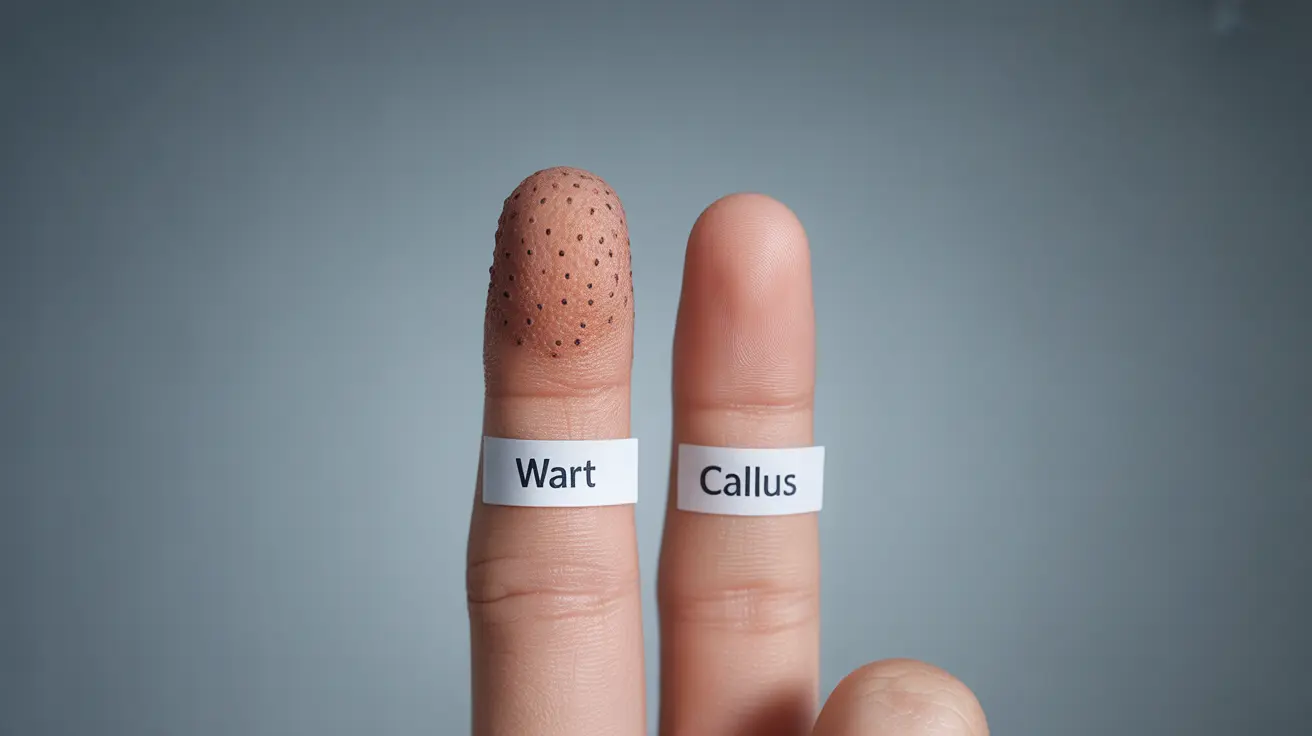When you notice a hard spot or bump on your finger, it's important to determine whether you're dealing with a wart or a callus. These common skin conditions may look similar at first glance, but they have different causes, characteristics, and treatment approaches. Understanding these differences is crucial for proper care and prevention.
In this comprehensive guide, we'll explore how to distinguish between warts and calluses on fingers, discuss effective treatment options, and provide prevention strategies to keep your hands healthy.
Key Characteristics of Warts and Calluses
Wart Identification
Warts on fingers typically have these distinctive features:
- Rough, grainy appearance
- May have small black dots (blood vessels)
- Can be painful when pressed
- Often have irregular borders
- May appear in clusters
- Caused by HPV virus infection
Callus Characteristics
Calluses generally present with these traits:
- Uniform, smooth appearance
- Even coloration throughout
- Develops gradually from friction
- Usually larger than warts
- Often found on areas of repeated pressure
- No viral cause
Causes and Risk Factors
What Causes Warts
Finger warts are caused by the human papillomavirus (HPV) entering through small cuts or breaks in the skin. They're particularly common among:
- People with weakened immune systems
- Those who bite their nails
- Individuals who frequently work with raw meat
- Children and adolescents
Callus Development
Calluses form as a natural protective response to repeated friction or pressure. Common causes include:
- Writing or drawing for extended periods
- Playing musical instruments
- Using tools regularly
- Sports activities
- Regular manual labor
Treatment Options
Treating Warts
Several effective treatments are available for finger warts:
- Over-the-counter salicylic acid products
- Cryotherapy (freezing)
- Prescription medications
- Laser treatment
- Surgical removal
Managing Calluses
Callus treatment typically involves:
- Regular moisturizing
- Gentle filing with pumice stone
- Wearing protective gloves
- Reducing repetitive pressure
- Using padding or cushioning
Prevention Strategies
Preventing Warts
To reduce the risk of developing finger warts:
- Wash hands regularly
- Avoid touching existing warts
- Keep skin healthy and moisturized
- Strengthen immune system
- Cover cuts and breaks in skin
Preventing Calluses
To minimize callus formation:
- Use proper ergonomic tools
- Take regular breaks during repetitive tasks
- Wear appropriate protective gear
- Keep hands moisturized
- Address early signs of skin hardening
When to Seek Medical Attention
Consult a healthcare provider if you experience:
- Rapid growth or changes in appearance
- Severe pain or bleeding
- Interference with daily activities
- Signs of infection
- Uncertainty about the diagnosis
Frequently Asked Questions
What are the main differences between a wart and a callus on my finger? A wart is caused by a viral infection and typically has a rough, grainy texture with possible black dots, while a callus is caused by friction and presents as a smooth, uniform area of thickened skin.
How can I tell if a hard bump on my finger is a wart caused by HPV or a callus from friction? Warts tend to have irregular borders and may contain tiny black dots (blood vessels), while calluses are usually uniform in color and texture, with clearly defined edges based on the area of friction.
What treatments are effective for removing calluses or warts on fingers? Warts can be treated with over-the-counter medications, cryotherapy, or professional removal, while calluses respond well to regular moisturizing, gentle filing, and addressing the source of friction.
How can I prevent calluses or warts from forming on my fingers during repetitive activities? Use proper protective equipment, maintain good hand hygiene, take regular breaks, and use ergonomic tools. For callus prevention, use padding where needed and keep hands moisturized.
When should I see a doctor about a hard patch of skin or bump on my finger that might be a callus or wart? Seek medical attention if the growth changes rapidly, causes significant pain, bleeds, shows signs of infection, or if you're unsure about its nature.




